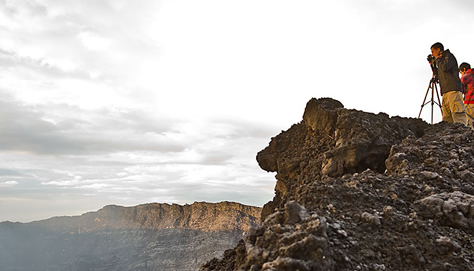According to telegraph.co.uk , The Eastern lowland gorilla, the world’s greatest ape, has suffered a “catastrophic decline” in the restive Democratic Republic of Congo, blamed on mining for minerals used in mobile phones.
Scientists said the numbers in the wild have dwindled three quarters in 20 years, to just 3,800 from 17,000 before civil war first broke out in 1996, and fear that without rapid intervention, the majestic creatures could disappear altogether in the next five years.
Andrew Plumptre, of the Wildlife Conservation Society and the lead researcher on the gorilla count, said while they knew numbers had declined, the results came as a shock.
“‘Back of the envelope’ calculations had predicted a 30-50 per cent decrease,” he said. “However, we received a major shock upon pulling together all the regional survey data: none of us were prepared for such a large decrease.”
He said the main reason appeared to be a surge in artisanal mining sites controlled by armed militias deep in the forest, making a living from the DRC’s rich reserves of minerals such as gold and coltan, an essential ingredient in the manufacture of mobile phones.
Scientists have called on the DRC’s government – at present embroiled in a constitutional crisis because of President Joseph Kabila’s wish to run for a third term – to crack down on armed groups in the region whom they accuse of feeding off the gorillas.
And the authors of the report on the count said consumers also have a responsibility to lobby companies producing mobile phones, tablets and laptops, to ensure that the minerals they use are conflict-free.
The eastern lowland gorilla, known as Grauer’s gorilla after Rudolf Grauer, an Austrian explorer and zoologist in the early 1900s who first recognised it as a separate subspecies, lives in the dense jungles of the eastern DRC.
The area was flooded with refugees fleeing Rwanda’s genocide in the mid-1990s, resulting in regional insecurity and the formation of armed groups who fought for domination of its rich natural resources and were blamed for large-scale deforestation and poaching.
In some areas, such as Virunga National Park which was featured in an award-winning documentary, foreign funding has been pumped into security and conservation efforts allowing mountain gorilla populations to recover.
But further south, in the Kahuzi-Biega National Park and the Itombwe Reserve, Grauer’s gorillas have received little protection, with disastrous results.
“In such remote places, miners rely on bush meat for food. Sadly, gorillas are easy to find and kill, and provide a lot of meat for one bullet,” said Mr Plumptre.
Weighing up to 300 kg, Grauer’s gorillas are the largest apes in the world and have longer limbs and longer hair than the western gorillas that live in the DRC, Gabon, Cameroon and Nigeria.
Last month, the report’s findings saw them moved on to the critically endangered list by the International Union for the Conservation of Nature.
The authors of the report, which was published this week in US scientific journal PLOS One, have called on the government of the DRC to crack down on militia operating in the area, and better regular small-scale mining.
They also want the boundaries of the parks where the gorillas live to be formalised and for rangers – one of whom was killed by poachers two weeks ago – to be better supported.



Leave a comment: